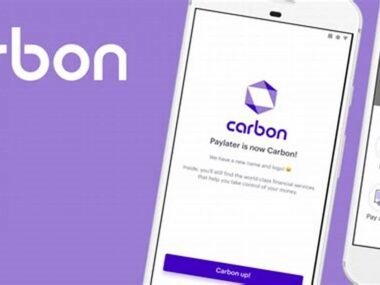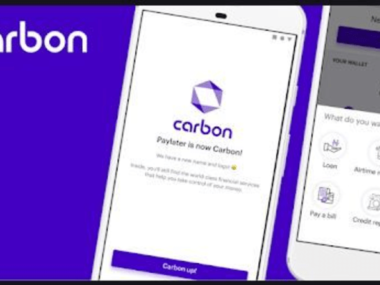When you’re in a financial crunch, needing a loan may seem like your only option to get through tough times. Whether it’s to pay for emergency expenses, invest in your business, or cover other urgent needs, taking out a loan can provide the relief you’re looking for. However, understanding the terminology surrounding loans is critical. Words like “loan offer” and “loan agreement” often get thrown around, but many people don’t fully grasp the difference between the two.
Imagine you’re in a position where you need money urgently, and you’ve received a loan offer from a financial institution or lender. You might feel a sense of relief—finally, the financial help you need. But what comes next? What is the next step to make sure you’re not signing up for something that you’re not fully prepared for?
You can also read:
- How to Get Fast Funds with Instant Approval and Easy Terms!
- Are There Agricultural Loans for Farmers in Nigeria?
- How Can Rural Farmers Access Loans Without Bank Accounts?
- What Types of Loans Are Available to Nigerians, and Which One Suits My Needs Best?
- How Can I Manage My Loan Repayment If I Have a Fluctuating Income?
- How to Get Quick Loan Approval Without Stress in Nigeria
- How to Apply for Loans Without Being Rejected in Nigeria
- Proven Steps to Secure a Loan Without Collateral in Nigeria
- The Secrets to Getting Your Loan Approved on the First Attempt
- How to Borrow Money Safely Without Falling for Scams
- How to Access Loans Fast Without Long Bank Delays
- How to Apply for a Loan Without a Guarantor or BVN
- The Easiest Way to Get a Loan Without Collateral in Nigeria
- Best Loan Options in Nigeria for People with No Steady Income
- Smart Strategies to Get Your Loan Approved Faster
- How to Access Loans for Your Business Without High Interest Rates
- Top Mistakes to Avoid When Applying for a Loan in Nigeria
- How to Borrow Money Without Ruining Your Reputation
Understanding the distinction between a loan offer and a loan agreement is essential. In this article, we’ll break down these terms, explain what they mean, and help you navigate your loan process, so you can make informed decisions that are right for your financial future.
Loan Offer vs. Loan Agreement: What’s the Difference?
Many Nigerians face moments where they need money urgently—whether it’s for unexpected medical expenses, to fund a business, or to cover everyday living costs. If you’ve ever found yourself in this position, you’ve likely encountered the terms “loan offer” and “loan agreement.” But what exactly do these terms mean, and how do they affect your financial journey? Let’s break them down.
Loan Offer: The Preliminary Step
A loan offer is the initial proposal or offer from a lender stating the terms under which they are willing to lend you money. It’s an invitation, a starting point, and a chance for you to evaluate whether this loan is the right fit for your needs. Think of it like a “preliminary agreement” that provides the high-level details, but it’s not binding yet. Here are some features of a loan offer:
- Amount: The lender will state how much money they are willing to lend you.
- Interest Rate: The interest charged on the loan amount, often calculated annually or monthly.
- Repayment Period: How long you’ll have to pay back the loan.
- Fees: Any additional costs that might apply, such as processing fees or penalties for late payment.
- Eligibility Requirements: What you need to qualify for the loan.
The loan offer gives you a chance to review these details. If you’re happy with the terms, you can proceed to the next step: signing a loan agreement. But if you find something in the offer that you don’t like—whether it’s the interest rate, fees, or the repayment period—you can decline the offer and explore other options.
Loan Agreement: The Legal Commitment
Once you accept the loan offer, the next step is to sign a loan agreement. This is the official, legally binding document that outlines the exact terms and conditions of the loan. A loan agreement goes into much more detail than a loan offer and specifies your legal responsibilities as a borrower. Here’s what a loan agreement typically includes:
- Loan Amount: The total amount of money you’ll borrow.
- Interest Rate and Terms: Detailed explanation of how the interest rate will be applied and the total cost of borrowing.
- Repayment Schedule: The specific dates and amounts you need to repay, along with any penalties for late payments.
- Default Clauses: What happens if you fail to repay the loan, including potential legal action or impact on your credit score.
- Collateral (if applicable): Some loans require you to pledge assets, such as a car or property, as collateral to secure the loan.
Once you sign the loan agreement, you are legally bound to its terms. This means you have to repay the loan according to the agreed-upon schedule, and any failure to do so can result in legal consequences, including damage to your credit score or loss of collateral.
How Can You Use a Loan to Improve Your Financial Situation?
Now that you understand the difference between a loan offer and a loan agreement, the next question is: how do you use a loan effectively? Whether you’re borrowing to pay off a debt, fund your business, or manage an emergency expense, it’s crucial to have a clear plan for how to manage the loan.
1. Identify Your Loan Needs
First, determine the exact amount of money you need. Avoid borrowing more than necessary. Too many people take out larger loans thinking they might need more, only to end up with higher repayments than they can handle. A clear understanding of your financial needs helps you avoid unnecessary debt.
2. Create a Repayment Plan
Before signing any loan agreement, create a repayment plan. Look at your monthly income and expenses to ensure that you can afford the repayments. Don’t stretch your budget too thin. If you’re borrowing to fund a business, ensure you have a solid strategy for generating revenue that will allow you to repay the loan without stress.
3. Stick to Your Plan
Once you’ve signed the loan agreement, the most important thing is to stick to the repayment plan. Missing payments can lead to extra fees and damage to your credit score, so it’s important to prioritize loan repayments over unnecessary spending.
Loan Options: Carbon Loan
If you’re considering borrowing money, one option to explore is Carbon Loan, a fast and accessible loan provider in Nigeria. Here’s a breakdown of what they offer:
| Loan Type | Interest Rate | Eligibility | Repayment Plan |
|---|---|---|---|
| Personal Loan | 15% per month | Nigerian citizen, stable income source, minimum age 21 | Flexible repayment options up to 12 months |
| Emergency Loan | 12% per month | Proof of urgent need, valid identification | Repayment in 3 to 6 months |
| Business Loan | 18% per month | Business owners with proven income and a registered business | Flexible repayment over 6 to 12 months |
For more details, you can apply directly via the Carbon website.
Risks to Consider
While loans can be a lifeline in times of need, it’s important to understand the risks:
- High-Interest Rates: Some loan providers, particularly those offering quick loans, charge higher interest rates.
- Repayment Pressure: Missing a payment can result in late fees or legal consequences, depending on the terms of your agreement.
- Debt Cycle: If you take out multiple loans or borrow more than you can repay, it can lead to a cycle of debt that’s hard to break.
Advice from the Edujects:
“On no account should you take beyond what you can repay. This is an opportunity, but don’t overuse it just because you have access to it freely. Don’t borrow beyond your income expectations. Endeavor to use the money for its purpose. Learn from the Igbo business model. They would never borrow money for anything other than the intended purpose. An emergency requires an emergency purpose, and once it’s fixed, immediately start planning for repayment. This ensures credibility with the bank and will help others in need. The best way to encourage Carbon Loan to extend more emergency loans is by paying back on time. As you take the loan, start planning for repayment today. Share this advice with anyone who needs help.”
Conclusion
Understanding the difference between a loan offer and a loan agreement is key to making smart, informed financial decisions. By evaluating the loan offer, reviewing the terms of the loan agreement, and planning for repayment, you’ll ensure that borrowing money doesn’t become a burden. Use loans responsibly, and always prioritize your ability to repay before borrowing more.






